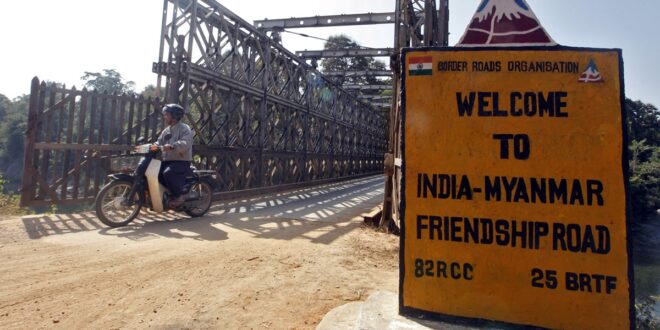Guwahati: Union Home Minister Amit Shah has announced that India will erect a fence along the border ( border) with Myanmar to restrict free movement in India. The system that allows people from both countries to travel up to 16 km in either direction without travel documents will be abolished.
The Free Movement Mechanism (FMR), which in its current form enables entry without visas and passports. It began as a system to allow tribes sharing familial, social and ethnic ties on both sides of the border to keep in touch with their people.
‘Will erect fence on open border of India-Myanmar’
“We will fence the open India-Myanmar border, just like we fenced the border with Bangladesh. We are re-evaluating the free movement arrangement with Myanmar and will terminate the agreement,” Home Minister Amit Shah said at an event. .”
Drug smuggling from Myanmar border
From Arunachal Pradesh to Mizoram, India shares a 1,600 km long border with Myanmar. The Manipur government led by Chief Minister N Biren is asking the Center to remove the FMR. It alleges that Myanmar insurgents, illegal immigrants and drug smugglers are misusing the FMR and entering Manipur to create trouble.
More than 180 people have been killed in ethnic violence between the hill-majority Kuki tribes and the valley-majority Meiteis since May 3, 2023. Manipur’s neighboring Mizoram has told the Center that it will oppose any move to fence the border. Mizoram Chief Minister Lalduhoma has said that the border was demarcated by the British and hence it is unacceptable for people of the same ethnic groups on both sides.
When India starts fencing the border with Myanmar, it is not known whether the fence will be placed at some distance from the “zero line”, similar to the border with Bangladesh where the fence will be 130 meters from the “zero line”. Is at a distance of. Due to the terrain, this method may be difficult to follow on the India-Myanmar border.
India and Myanmar: When and what happened on the border agreement?
1950: The government allows Indian and Burmese citizens to enter up to 40 km on either side without passport or visa. Burmese people can stay in India for 72 hours, while Indians can stay in Myanmar only for 24 hours.
1968: India prepared FMR with a new permit system. Permits for temporary entry are to be issued by both sides to their citizens. Then, due to the increase in militancy in Manipur, Mizoram and Nagaland, concerns over FMR were raised in India.
2004: India limited the FMR distance from 40 km to 16 km. Additionally, instead of allowing people to cross through multiple points, only three locations were allowed to be used as entry points – Pangsau in Arunachal Pradesh, Moreh in Manipur, and Zokhawthar in Mizoram.
2018: India and Myanmar signed agreement on land border crossing. The government said in a statement that the agreement will facilitate the regulation and harmonization of free movement rights that already exist for people living in the border areas of the two countries. It will also facilitate movement of people on the basis of valid passports and visas, thereby increasing economic and social interaction between the two countries.
Manipur’s security advisor Kuldeep Singh said on January 18 that there was a possibility of Myanmar insurgents attacking security forces in the border town of Moreh, but there was no evidence yet. His comments came after two police commandos were killed in action in Moreh.
Kuldeep Singh had confirmed the involvement of “Kuki militants” in the attack on state forces. He told reporters on January 18 that early in the morning, a large number of Kuki militants had started firing on commando posts at three locations.
The Kuki tribes, who are in Moreh and want the state forces to withdraw, citing a complete breakdown of trust along ethnic lines, have accused the state forces of harassing them and burning buildings in the border town.
 Indian Thought Latest News & Views
Indian Thought Latest News & Views



